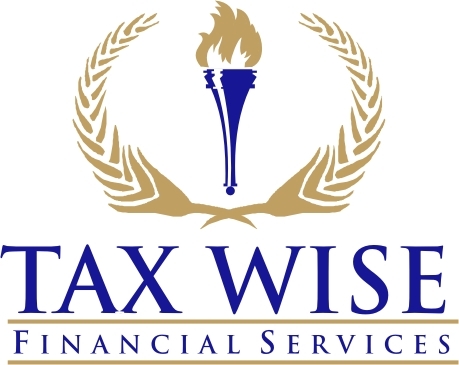
Saving for retirement is important, but many people do not realize they can use their retirement accounts for more than just stocks and bonds. One powerful option is using a Traditional IRA for real estate tax savings with tax saving investments. This approach allows people to grow their wealth, lower taxes, and invest in assets they understand. In 2025, more investors are turning to this strategy to prepare for the future while protecting their money from heavy tax bills.
What is a Traditional IRA?
A Traditional IRA, or Individual Retirement Account, is a retirement savings account that gives you tax benefits. When you put money into a Traditional IRA, the amount you contribute is usually tax-deductible. This means you can reduce your taxable income in the year you make the contribution.
For example, if you make $60,000 in 2025 and contribute $6,000 to your Traditional IRA, you may only be taxed as if you earned $54,000. That immediate savings makes a big difference over time. Another benefit is that the investments inside a Traditional IRA grow tax-deferred. You will only pay taxes when you withdraw money in retirement, which is often at a lower tax rate.
But here’s the exciting part: a Traditional IRA can hold more than just mutual funds and stocks. With a special type of account called a self-directed IRA, you can invest in real estate as part of your tax saving investments.
How do self-directed IRAs let you use real estate as tax saving investments?
A self-directed IRA is a retirement account that gives you more control over what you invest in. Instead of being limited to traditional options like bonds or stocks, you can add real estate, private businesses, or even precious metals.
When it comes to real estate, this flexibility is very powerful. Imagine using your IRA funds to buy a rental house, a commercial property, or even a piece of land. The rent or profits from selling that property flow back into your IRA, growing tax-deferred. By using a Traditional IRA for real estate tax savings with tax saving investments, you create a way to build wealth while keeping taxes low.
Here’s an example:
- You use $100,000 from your self-directed IRA to buy a rental property.
- The property brings in $10,000 in rent each year.
- Instead of paying taxes on that rental income right away, the money stays inside your IRA and grows tax-deferred.
This lets your investments grow faster compared to paying taxes on the income every year. Over time, this tax shelter can mean thousands of dollars in extra retirement savings.
Why Real Estate Works Well for Tax Saving Investments
Real estate is considered a strong option for long-term wealth building. When combined with a Traditional IRA, it becomes even more powerful. Here are some reasons why:
- Steady Income: Rental properties can bring in regular income, and when inside a self-directed IRA, that income is tax-deferred.
- Appreciation: Over time, real estate often increases in value. Selling property through your IRA means you avoid immediate capital gains taxes.
- Diversification: Adding real estate balances your portfolio so you are not only relying on stocks or bonds.
- Control: With real estate, you can make decisions about the property, location, and tenants. This gives you a sense of control over your retirement savings.
By focusing on real estate as part of your tax saving investments, you can create a retirement strategy that is both stable and flexible.
Rules You Need to Know in 2025
Even though the idea of using a Traditional IRA for real estate sounds simple, there are important rules. The IRS has strict guidelines you must follow when you use a self-directed IRA. Here are the main points:
- No Personal Use: You cannot live in or personally use the property owned by your IRA. It is strictly for investment purposes.
- No Self-Dealing: You cannot buy or sell property to yourself, family members, or businesses you own.
- Expenses and Income Stay in the IRA: All costs related to the property must be paid with IRA funds, and all income must return to the IRA.
- Required Minimum Distributions (RMDs): Starting at age 73 (as of 2025 rules), you must begin taking money out of your Traditional IRA. This means you may need to sell part of the property or have enough cash inside the IRA to cover withdrawals.
Breaking these rules can cause penalties and taxes, so it is important to work with a custodian who understands self-directed IRAs.
The Benefits of Real Estate in a Traditional IRA
The combination of real estate and retirement tax benefits is powerful. Here are some of the top advantages:
- Lower Taxes Now and Later: Contributing to a Traditional IRA lowers your taxable income today. The real estate profits then grow without taxes until retirement.
- Compound Growth: Because the income is reinvested tax-deferred, your money compounds faster over the years.
- Wealth Protection: Real estate tends to hold value better than stocks during market downturns. This can protect your retirement savings from risk.
- Flexibility for Investors: You can choose different types of real estate: residential, commercial, or land—depending on your goals.
In 2025, many investors are discovering that combining a Traditional IRA with real estate is one of the smartest ways to build long-term wealth through tax saving investments.
Challenges and Risks
While the benefits are clear, there are also risks to think about:
- Liquidity: Real estate is not easy to sell quickly. If you need cash for required withdrawals, this can be a challenge.
- Management: Rental properties require upkeep, tenants, and repairs. Although you can hire managers, it still adds complexity.
- Market Fluctuations: Real estate values can go down depending on the economy.
- Custodian Fees: Self-directed IRAs often come with higher fees compared to regular IRAs.
Understanding these risks is just as important as recognizing the benefits. Successful investors balance both before making decisions.
Steps to Get Started in 2025
If you want to use a Traditional IRA for real estate tax savings with tax saving investments, here’s a simple roadmap:
- Open a Self-Directed IRA: Choose a custodian who allows real estate investments.
- Fund Your Account: Transfer money from an existing IRA or make new contributions.
- Select a Property: Research real estate opportunities that fit your budget and goals.
- Follow the Rules: Make sure all expenses and income flow through your IRA.
- Plan for Withdrawals: Think ahead about how you’ll handle required distributions in retirement.
Taking these steps carefully ensures you stay within IRS rules while getting the most out of your investments.
Conclusion
In 2025, more people are exploring smarter ways to grow retirement savings while lowering taxes. One of the most effective strategies is using a Traditional IRA for real estate tax savings with tax saving investments. With the flexibility of a self-directed IRA, you can add real estate to your portfolio, protect your money from immediate taxes, and enjoy the benefits of steady income and appreciation.
This approach is not without rules and risks, but for investors who want control and long-term growth, it offers a powerful path. By planning carefully and working with the right custodian, you can use your Traditional IRA to make real estate part of your future, helping you save on taxes and build wealth for retirement.


